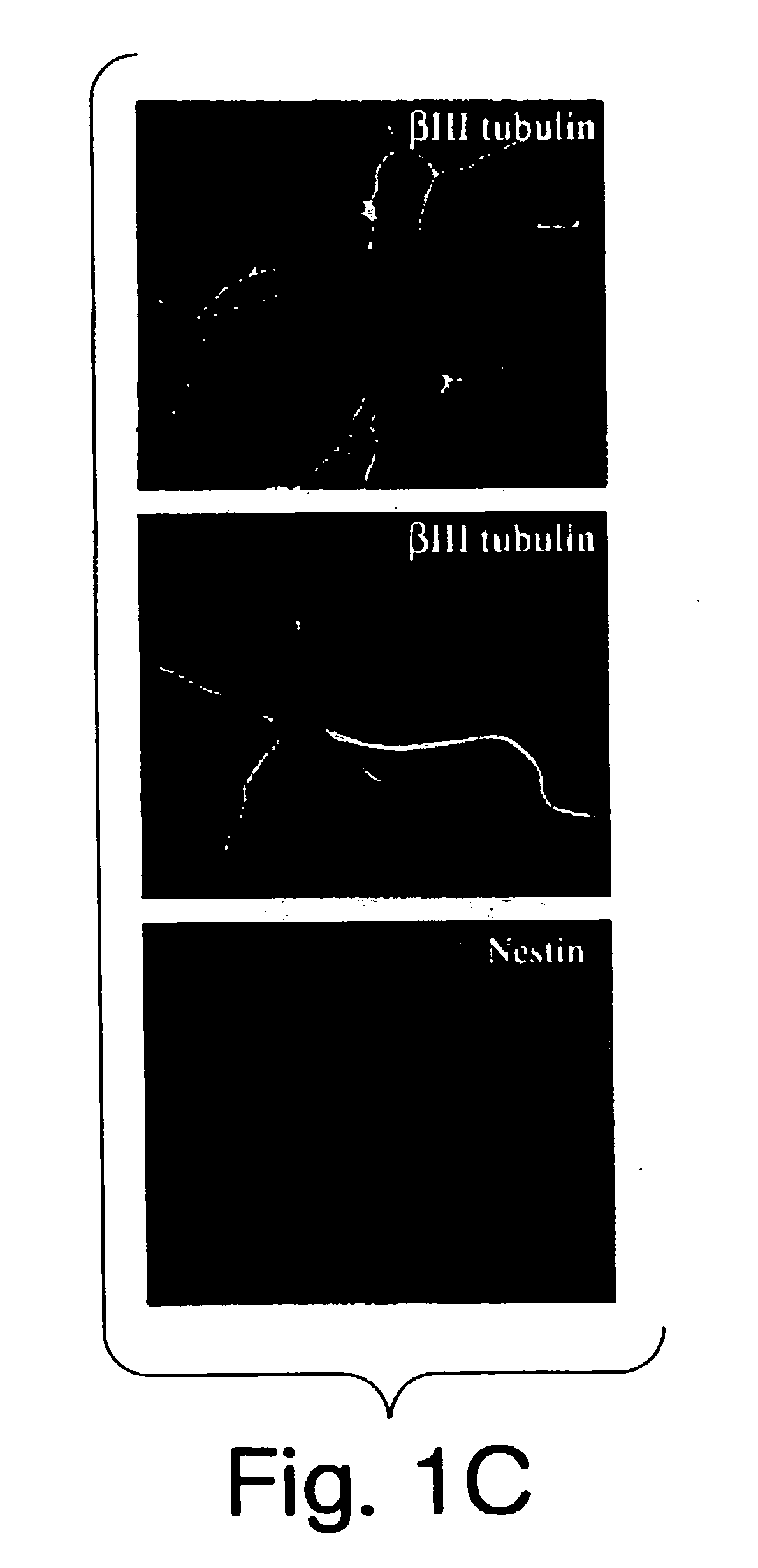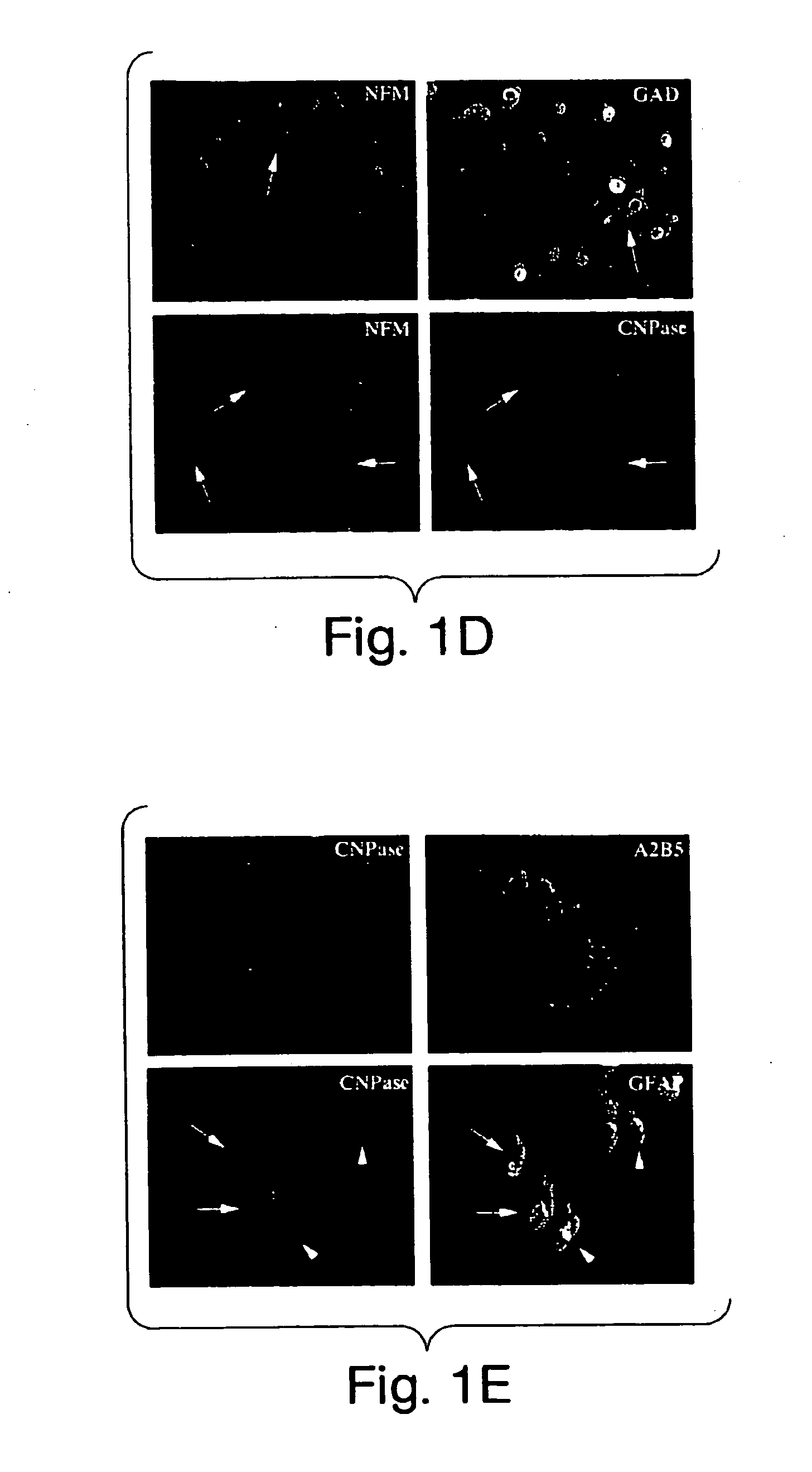Multipotent stem cells from peripheral tissues and uses thereof
a multi-potent stem cell, peripheral tissue technology, applied in the direction of nerve system cells, genetically modified cells, non-embryonic pluripotent stem cells, etc., can solve the problems of affecting the site where healthy neurons originate, unable to provide a sufficient amount of neural tissue to meet the demands, and often incurable diseases, etc., to achieve the effect of simplifying the cell harvesting
- Summary
- Abstract
- Description
- Claims
- Application Information
AI Technical Summary
Benefits of technology
Problems solved by technology
Method used
Image
Examples
example 1
Purification of MSCs from Postnatal Mouse Olfactory Epithelium
[0108] MSCs from mouse olfactory epithelium were purified as described below. Postnatal mice were stunned with a blow to the head and then decapitated. The heads were sagitally sectioned with a razor blade, and the olfactory epithelia of about six postnatal (P1-P9) mouse pups were stripped from the conchae, nasal septum, and vomeronasal organs using watch-maker forceps. This tissue was placed into 3 mL of medium (DMEM / F-12 3:1) supplemented with 2% B-27 (Gibco, Burlington, Ontario, Canada), 20 ng / mL epidermal growth factor (EGF; Collaborative Research, Bedford, Mass.), 0.1% fungizone, and 0.5 mL / 100 mL penicillin / streptomycin (Gibco). Following collection, the epithelia were teased apart with watchmaker forceps, releasing a large number of single cells and small cell clusters. The cell suspension was transferred to a 15 mL tube, and 7 mL of additional medium was added. The clusters were dissociated into single cells by m...
example 2
Differentiation of Mouse MSCs into Neurons, Astrocytes and Oligodendrocytes
[0111] After the cellular clusters of Example 1 had been generated, they could be differentiated into neurons, astrocytes, and oligodendrocytes. Clusters from cultures 7 to 14 days after purification were plated onto polylysine coated 35 mm culture dishes or 4 multiwell culture dishes, in DMEM / F12 media containing 2% fetal bovine serum (Hyclone, Logan, UT) and 2% B-27 (containing no EGF). The medium was changed every three to four days. Over the next six to nineteen days, cells migrated out of the clusters onto the dish surface. Some of these cells had the morphology of neurons, astrocytes, or oligodendrocytes. We determined the phenotype of these cells using the following antibodies: GFAP for astrocytes; neurofilament 160 (NF-160), MAP-2, βIII tubulin, and NeuN for neurons; and GC for oligodendrocytes. Antibodies to tyrosine hydroxylase (TH) were used to identify dopaminergic, noradrenergic, and adrenergic ...
example 3
Purification of MSCs from Olfactory Epithelial Tissue of Adult Mice and Rats
[0115] Similar to the foregoing results, MSCs were also purified from adult mouse and rat olfactory epithelium and vomeronasal organ using the methods described in Examples 1 and 2.
[0116] Adult mice and rats were anaesthetized with an overdose of somnitol, and then decapitated. The olfactory and vomeronasal organ epithelia were stripped from the conchae and nasal septum and incubated in DMEM / F12 medium for one to two days after their dissection and prior to the rest of the purification procedure. After this incubation, the epithelia were dissociated in an identical manner as the epithelia from juvenile mice. Two days after the isolation, the majority of the cells were dead with the exception of a very few large phase bright cells. These cells divided over the next few days, forming small clusters of dividing cells similar to those described in Example 1. These small clusters grew to give rise to the large ...
PUM
| Property | Measurement | Unit |
|---|---|---|
| diameter | aaaaa | aaaaa |
| diameter | aaaaa | aaaaa |
| total volume | aaaaa | aaaaa |
Abstract
Description
Claims
Application Information
 Login to View More
Login to View More - R&D
- Intellectual Property
- Life Sciences
- Materials
- Tech Scout
- Unparalleled Data Quality
- Higher Quality Content
- 60% Fewer Hallucinations
Browse by: Latest US Patents, China's latest patents, Technical Efficacy Thesaurus, Application Domain, Technology Topic, Popular Technical Reports.
© 2025 PatSnap. All rights reserved.Legal|Privacy policy|Modern Slavery Act Transparency Statement|Sitemap|About US| Contact US: help@patsnap.com



